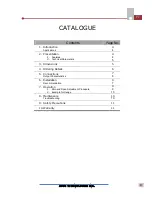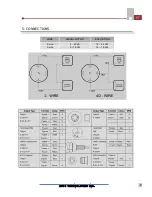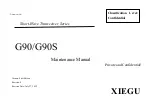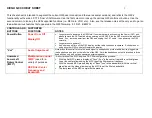
ABUS TECHNOLOGIES INC.
9
PT
6. INSTALLATION
Recommendation
1. Please confirm the configuration for Pressure Transmitter i.e. 2- wire, 3-wire and accordingly follow the
wiring procedure. Ensure that the excitation voltage is supplied to the correct points and is with in the
specified limits for that particular configuration as mentioned in the table above.
2. When installed, ensure that the transmitter is not subjected to the excessive sources, and it should be
considered before installing the Transmitter. Use suitable diaphragm if needed.
3. Process connection must be properly sealed with material compatible with the process liquid / gas.
4. When installing transmitter with diaphragm, seals / process connector should be tightened not the
transmitter, otherwise transmitter calibration may get affected.
7. OPERATION
7.1 Zero and Span Adjustment Procedure
Minor adjustment can be made to the output signal in case of any drift. The procedure for same is indicated
as below:
1. On top of the Pressure Transmitter is the DIN Connector. Remove it by first removing the screw.
2. Four Terminals will be found on top of which will be a rubber washer. Remove the rubber washer
gently.
3. This next step is crucial and to be done very gently. Holding the PT in the palm of the hand, press
down the four terminals and revolve the thread, such that the terminals do not move at all. This is
necessary as the wiring inside the casing might get twisted and the device will be damaged.
4. After the thread is removed, gently lift the terminals. Inside is a PCB, and on each side of the PCB are
two Potentiometers (covered under white wax) using which the Zero and Span adjustments will be
done.
5. The symbols Z & S are etched on the body of the PT casing just below the terminals. Z indicates the
potentiometer for Zero adjustment and S for Span adjustment.
6. Two wires, one for power and one for input are connected and the output is taken.
7. If while applying a pressure of 0 bar, the output deviated from standard Zero Signal (4 mA in case the
output is 4-20 mA). Then the Zero adjustment has to be done till the output is exactly 4 mA. The
same way, the Span adjustment is done with the S potentiometer by applying the full span pressure
and getting an output of exactly 20 mA.
8. After adjustment is done, replace the thread, washer and DIN connector in the reverse order.




























